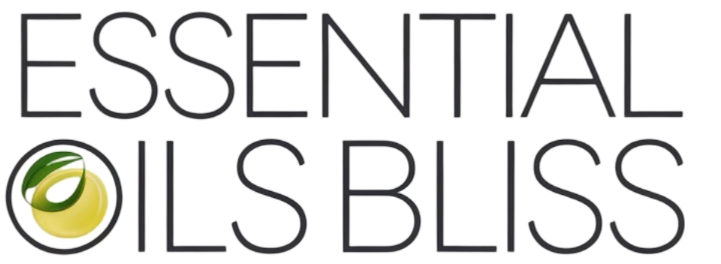Is Canola Oil a Carrier Oil?
Yes, canola oil is indeed a carrier oil. It’s derived from the seeds of the canola plant and offers several benefits that make it a popular choice for diluting essential oils and for skincare.
Why is Canola Oil a Good Carrier Oil?

- Light and Non-Greasy: Canola oil is easily absorbed by the skin without leaving a heavy or oily residue. This makes it suitable for all skin types, even those prone to acne.
- Moisturizing: It effectively hydrates and softens the skin, thanks to its rich fatty acid content. This makes it especially beneficial for those with dry or rough skin.
- Anti-inflammatory: Canola oil contains compounds that can help soothe irritated skin and reduce inflammation.
- Eco-Friendly: Canola is typically cultivated using sustainable farming practices, making it an environmentally conscious choice.
- Affordable: Compared to other carrier oils like jojoba or almond oil, canola oil is generally more budget-friendly.
- Versatile: Beyond skincare, canola oil is a popular cooking oil with a high smoke point, making it suitable for various culinary applications.
For those interested in exploring other eco-friendly options, you might want to look into how olive oil serves as a carrier oil as well.
Chemical Composition and Properties
Canola oil’s unique fatty acid profile consists of approximately:
- 60% monounsaturated fatty acids (primarily oleic acid)
- 30% polyunsaturated fatty acids (including linoleic and alpha-linolenic acids)
- 10% saturated fatty acids
This specific composition contributes to its overall stability and versatility in various applications, enhancing its effectiveness as a carrier oil.
Physical Properties
| Property | Value |
|---|---|
| Color | Light yellow |
| Texture | Smooth and silky |
| Viscosity | Medium |
| Density | Approximately 0.92 g/cm³ |
| Smoke point | 468°F (242°C) |
| Acid value | 0.1 to 0.5% |
These physical properties make canola oil a practical choice for many formulations in skincare and beyond.
Applications in Skincare and Aromatherapy
Canola oil’s advantageous properties make it suitable for a variety of applications in skincare and aromatherapy:
Moisturizer
Its emollient properties effectively help hydrate and soften the skin, enhancing overall skin health. Regular use can lead to improved texture and reduced dryness, making it a favored choice among skincare enthusiasts.
Massage Oil Base
The smooth texture and easy absorption make it ideal for creating massage blends that provide relaxation and comfort.
Practitioners often prefer canola oil as a base for massage oils due to its ability to glide over the skin without leaving a greasy residue.
Aromatherapy Dilutant
Canola oil can serve as an effective dilutant for essential oils, ensuring safe topical application without compromising the benefits of the oils.
By mixing essential oils with canola oil, users can enjoy the therapeutic effects while minimizing the risk of irritation. You can also explore how different oils interact by reading more on mixing essential oils with coconut oil.
Comparison with Other Carrier Oils

When compared to other popular carrier oils, canola oil offers several distinct advantages:
| Oil | Advantages of Canola Oil |
|---|---|
| Coconut Oil | Less likely to clog pores, easier absorption |
| Olive Oil | Longer shelf life, more neutral scent |
| Jojoba Oil | More affordable, higher smoke point |
While each carrier oil has its own unique benefits, canola oil stands out for its balance of affordability, versatility, and eco-friendliness.
Safety Considerations
While generally considered safe for most users, it is important to keep the following precautions in mind:
- Perform a Patch Test: Always conduct a patch test before widespread use to check for any allergic reactions that may occur.
- Choose Quality Varieties: Opt for cold-pressed or expeller-pressed varieties to ensure the highest quality and to minimize potential contaminants. These extraction methods help retain the beneficial properties of the oil.
- Moderate Comedogenic Rating: Be aware of its moderate comedogenic rating, which may not be suitable for individuals with acne-prone skin. It’s essential to consider personal skin type before incorporating canola oil into your routine.
Effective Blending and Usage

When utilizing canola oil as a carrier, it is advisable to follow these guidelines for optimal results:
Dilution Ratios
Dilute essential oils at a 1-3% ratio (1-3 ml of essential oil per 100 ml of canola oil) to ensure safe usage.
This dilution helps prevent any adverse reactions while still providing the therapeutic benefits of the essential oils.
Adjusting Ratios
Adjust ratios based on the specific essential oil being used and the intended application.
Some essential oils may require different dilution levels depending on their potency and individual characteristics.
Proper Storage
Store blends in dark, cool places to maintain their freshness and efficacy over time.
Proper storage helps prolong the shelf life of your mixtures and ensures they remain effective when needed.
Conclusion
By understanding its beneficial properties and proper usage techniques, canola oil can prove to be an effective and versatile carrier oil for a variety of applications in both skincare and aromatherapy.
Its combination of moisturizing qualities, anti-inflammatory benefits, and eco-friendly cultivation makes it an excellent choice for those looking to enhance their skincare routines or aromatherapy practices.
With careful consideration of safety guidelines and blending techniques, canola oil can serve as a reliable companion in your holistic health journey.







